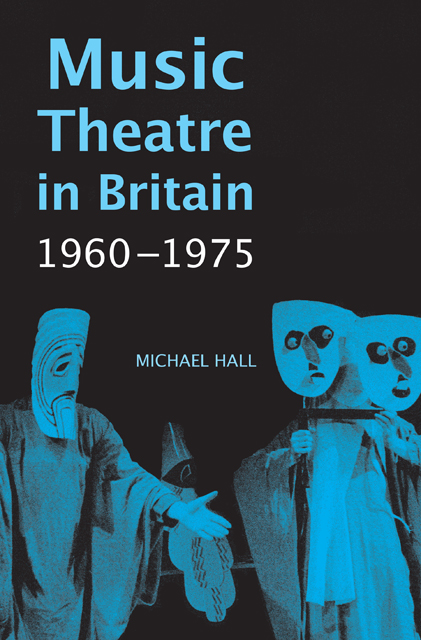3 - European and American Contemporaries
Published online by Cambridge University Press: 23 February 2023
Summary
Traditionally, theatre, including opera, has been primarily concerned with character: how characters are responsible for situations they have created, or how they respond to situations created by circumstances or by the actions of others. Eight of the specimens of Music Theatre discussed in the previous chapter fall into this category. Not all are as sharply focused as Pierrot lunaire, but even when actions take precedence over character, as initially in Monteverdi’s Il combattimento, it is the transformation of Tancredi and Clorinda’s belligerency into compassion and tranquillity that determines the outcome of the plot.
In two of the examples discussed in Chapter Two, Les noces and Der Flug der Lindberghs, the interest lies not in character but in the situations being celebrated: the ritual of a peasant wedding and the first flight across the Atlantic. To ensure that the audience will not empathise with the feelings of those on stage, all references to personal emotions are eliminated, Stravinsky has the exchanges between the bride and the groom in the wedding feast sung by the chorus, and when the groom speaks, his words are sung first by a tenor then by a bass. Likewise, Weill and Hindemith have Lindbergh’s words sung by a chorus, not by an individual. Here the emphasis is on the triumph of modern technology in the overcoming of adversity. Satie’s Le piège de Méduse lies somewhere between the theatre of character and that of situation. As I mentioned in the previous chapter, it anticipates what became known as the Theatre of the Absurd. Although the character of the Baron determines the action, the non sequiturs in the instrumental interludes exemplify the absurdity of the piece as a whole.
In my consideration of the work of the main figures in Music and Instrumental Theatre in Europe and America during the sixties and early seventies, I group them according to the types of theatre they cultivated, types that can be traced back to earlier twentieth-century antecedents. For me the Music Theatre of Luigi Nono, John Cage and Pierre Boulez represents the Theatre of Situation; that of Harry Partch, Luciano Berio and Hans Werner Henze, the Theatre of Character; and that of Karlheinz Stockhausen, Mauricio Kagel and György Ligeti, the Theatre of the Absurd.
- Type
- Chapter
- Information
- Music Theatre in Britain, 1960–1975 , pp. 47 - 68Publisher: Boydell & BrewerPrint publication year: 2015



